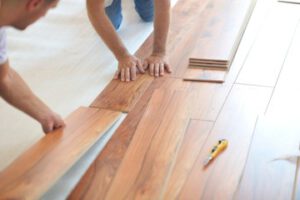When it comes to flooring, wood is one of the most common materials that people use. It comes in many different styles, cuts, and species. These are all great options for your home, but choosing the right type for your home can be difficult. Here are a few things that you need to consider before deciding on the best type for you.

Wood floors have been used in homes for centuries as a symbol of luxury and warmth. They are also known for their durability and longevity. They can also be stained in many different colors, which gives them a unique and eye-catching look.
There are many types of wood flooring to choose from, including solid hardwood. However, if you want the best of both worlds, engineered hardwood is a great choice. It can be a lot less expensive than solid hardwood and offers a variety of designs and textures. It also makes a good choice for below-grade areas.
The best part about engineered hardwood is that it is easy to maintain. It requires occasional damp mopping with an approved wood cleaner. It can be sanded and refinished a number of times.
Another plus is that it is less susceptible to warping. It can be installed in areas where humidity is high, such as the basement. The boards are typically 3/8- to 9/16-inch thick, and they come in a variety of widths and lengths.
Both solid and engineered hardwood is durable, but they are made with different methods. Engineered wood is usually produced in a factory and is pre-finished. This makes installation much easier and less messy. The finish also includes a protective coating that protects the wood from stains.
One of the advantages of solid hardwood is that it can be refinished several times, giving it a new look each time. It is not recommended for wet areas, such as bathrooms. It is not as waterproof as engineered.
If you’re interested in replacing your old hardwood floors, you might consider engineered wood flooring. The cost this type of floor is much cheaper than solid hardwood, and it can be installed in most rooms. It can also last for 20 to 30 years if properly maintained. However, there are some downsides to this type of floor.
For starters, you shouldn’t install this type of floor in wet areas, such as bathrooms or basements. This is because moisture can affect the floor’s stability, and it may be susceptible to warping. It also doesn’t have the same thickness of the top layer as solid hardwood, and it doesn’t have the same durability.
Another disadvantage is that engineered wood can fade in bright rooms. This can be especially noticeable if you’re using rugs. You can protect your flooring by placing doormats.
If you choose to install this type of flooring, you should choose a manufacturer that uses quality materials. This will give you a better-looking product that is durable.
Engineered wood floors are also easier to install than solid hardwood. If you’re a do-it-yourselfer, engineered wood is a great choice. You can install this type of flooring in just a day. It’s also easier to refinish than solid hardwood.
If you’re interested in installing an engineered wood floor, you should be prepared to do a little research. You should find a manufacturer that has a history of producing high-quality products. It’s also a good idea to get samples so you can check the relative thickness of the core and the veneer.
Unfinished hardwood flooring is a great option for those looking to get a true hardwood look. It allows for customization and comes in a wide variety of species. However, it is important to consider the maintenance involved with this type of flooring.
Unlike pre-finished hardwood floors, you can choose your own wood and stain. A combination of stain and color can give your floor a unique, custom look.